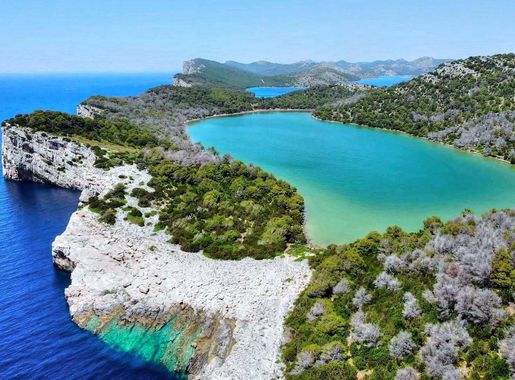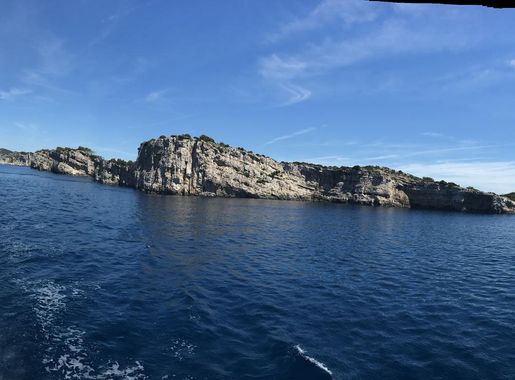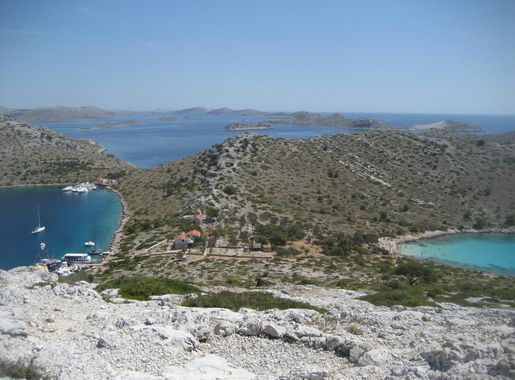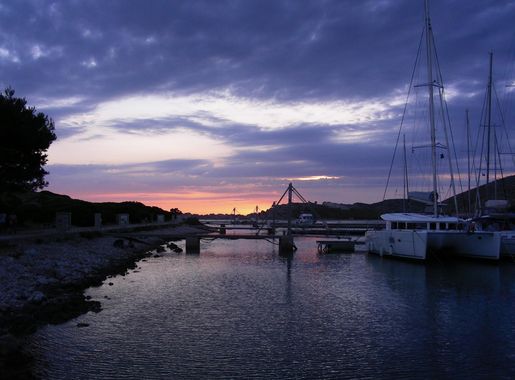
Kornati Islands National Park: A Croatian Archipelago Wonderland
Discover the captivating Kornati Islands National Park in Croatia, a stunning archipelago featuring crystal-clear waters, abundant marine life, and rich cultural heritage.
Kornati Islands National Park, a mesmerizing archipelago in Croatia, offers a unique blend of natural beauty and tranquility. Comprising over 140 islands, islets, and reefs, the park is a paradise for nature lovers and adventure seekers. The islands are known for their stark, rocky landscapes contrasted by the deep blue Adriatic Sea, creating a stunning visual experience. The park is a haven for sailors, divers, and hikers, with countless opportunities for exploration. The waters around the islands are crystal clear, making it an excellent spot for snorkeling and diving. Marine life is abundant, and visitors can expect to see colorful fish, corals, and even dolphins if they are lucky. Boating around the islands offers a unique perspective, allowing tourists to discover hidden coves and secluded beaches. History buffs will appreciate the ancient ruins scattered across the islands, remnants of Roman and Byzantine times. The Kornati Islands also boast traditional stone houses and dry stone walls, reflecting the region's cultural heritage. For those looking for a peaceful retreat, the islands provide a serene escape from the hustle and bustle of city life, where one can relax and soak in the untouched beauty of nature.
Local tips in Kornati Islands National Park
- Visit outside peak season for a more peaceful experience and lower prices.
- Bring snorkeling gear to explore the vibrant underwater world.
- Pack enough food and water, as there are limited facilities on the islands.
- Wear sturdy shoes if you plan to hike, as the terrain can be rocky.
- Check the weather forecast before setting out, as conditions can change rapidly.
Kornati Islands National Park: A Croatian Archipelago Wonderland
Kornati Islands National Park, a mesmerizing archipelago in Croatia, offers a unique blend of natural beauty and tranquility. Comprising over 140 islands, islets, and reefs, the park is a paradise for nature lovers and adventure seekers. The islands are known for their stark, rocky landscapes contrasted by the deep blue Adriatic Sea, creating a stunning visual experience. The park is a haven for sailors, divers, and hikers, with countless opportunities for exploration. The waters around the islands are crystal clear, making it an excellent spot for snorkeling and diving. Marine life is abundant, and visitors can expect to see colorful fish, corals, and even dolphins if they are lucky. Boating around the islands offers a unique perspective, allowing tourists to discover hidden coves and secluded beaches. History buffs will appreciate the ancient ruins scattered across the islands, remnants of Roman and Byzantine times. The Kornati Islands also boast traditional stone houses and dry stone walls, reflecting the region's cultural heritage. For those looking for a peaceful retreat, the islands provide a serene escape from the hustle and bustle of city life, where one can relax and soak in the untouched beauty of nature.
When is the best time to go to Kornati Islands National Park?
Iconic landmarks you can’t miss
Plitvice Lakes National Park
Explore the breathtaking beauty of Plitvice Lakes National Park, a UNESCO World Heritage site known for its stunning lakes and waterfalls in Croatia.
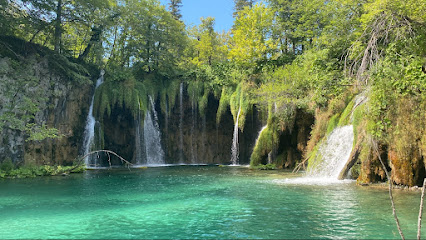
Telašćica Nature Park
Experience the breathtaking beauty and biodiversity of Telašćica Nature Park, a true gem of Croatia's natural heritage, ideal for adventurers and nature lovers alike.
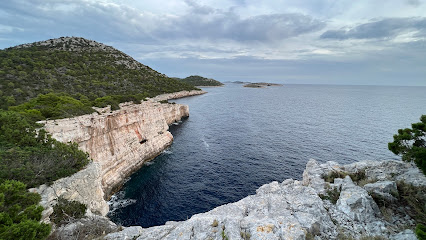
National Park Kornati
Explore the breathtaking landscapes and rich biodiversity of National Park Kornati, a stunning Croatian archipelago perfect for adventure and relaxation.
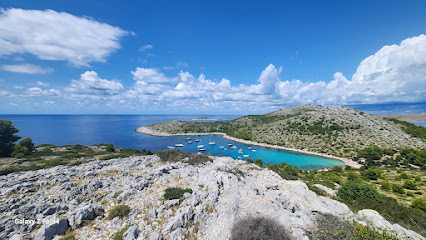
Lastovo Archipelago Nature Park
Explore the pristine beauty of Lastovo Archipelago Nature Park, a hidden paradise in Croatia with stunning landscapes and rich biodiversity.
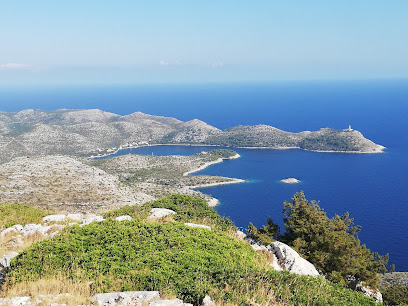
Fort Saint Michael
Discover the stunning ruins of Fort Saint Michael in Preko, where history meets breathtaking views of the Adriatic and Kornati islands.
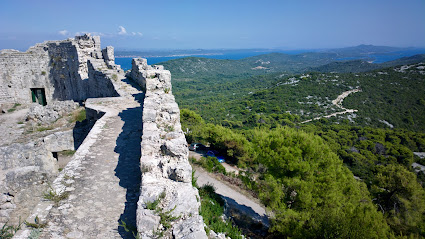
Murter Čigrada
Unwind at Murter Čigrada, where stunning public baths and crystal-clear waters create the perfect escape along Croatia's beautiful coastline.
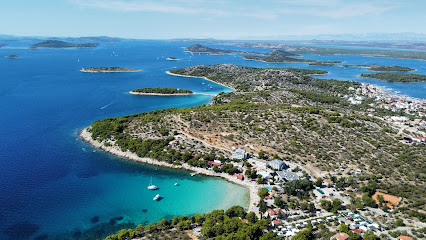
Northern Velebit National Park
Explore Northern Velebit National Park, Croatia's natural wonder, featuring breathtaking landscapes, diverse wildlife, and unforgettable hiking adventures.
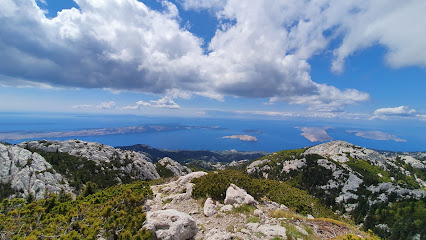
RESTORAN FEŠTA
Experience the best of Croatian cuisine at Restoran Fešta, where breathtaking views meet exquisite seafood dishes on Otok Žut.
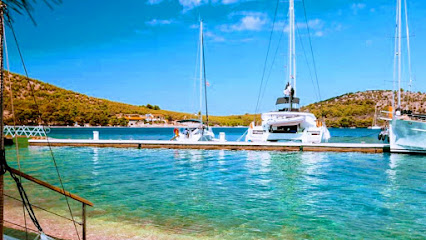
Lighthouse Veli Rat
Explore the stunning Lighthouse of Veli Rat on Dugi Otok, a perfect blend of history and breathtaking views of the Adriatic Sea.
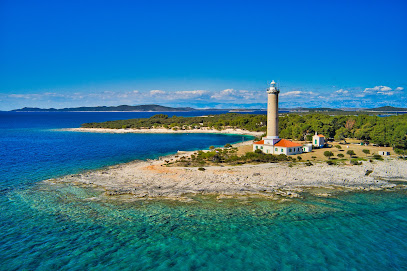
Plaža Punta Rožica
Discover the tranquil beauty of Plaža Punta Rožica, a serene beach destination in Bibinje, Croatia, perfect for relaxation and adventure.
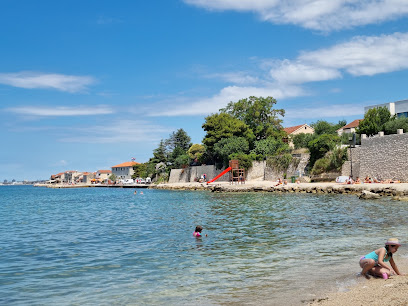
Lojena
Experience the tranquility of Lojena Beach, a stunning hidden gem in Kornati National Park, perfect for relaxation and adventure seekers.
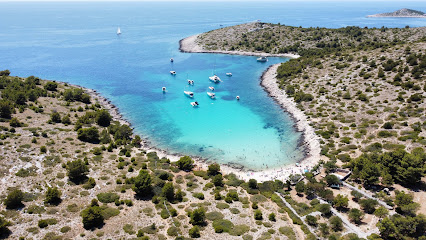
Konoba Opat
Discover the authentic taste of Croatia at Konoba Opat in the breathtaking Kornati Islands, where fresh seafood meets stunning views.
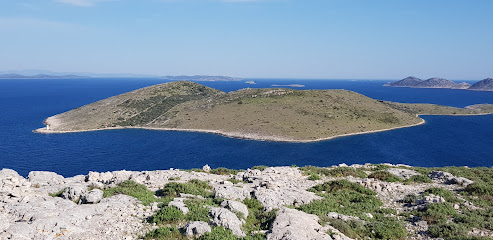
Konoba LARUS, Kornati
Experience the best of Mediterranean flavors at Konoba LARUS in Kornati National Park, where culinary delights meet stunning natural beauty.

Konoba Levrnaka
Experience the authentic flavors of Croatia at Konoba Levrnaka, surrounded by the majestic landscapes of Kornati National Park.
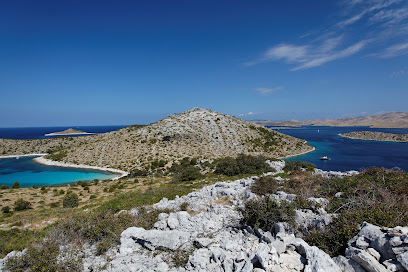
Manita peć
Explore the stunning Manita peć cave in Paklenica National Park, a natural wonder in Croatia, ideal for adventurers and nature lovers alike.
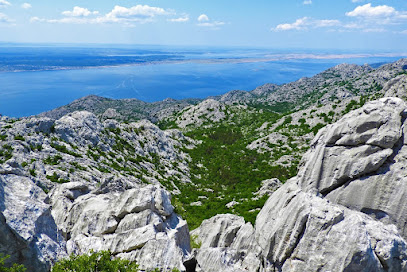
Unmissable attractions to see
Gradski most
Explore the architectural beauty and breathtaking views at Gradski Most, Zadar's iconic City Bridge, a must-see for every traveler.

St. John's Fort
Experience the historical grandeur of St. John's Fort in Šibenik, where stunning views and rich culture come together in a timeless setting.
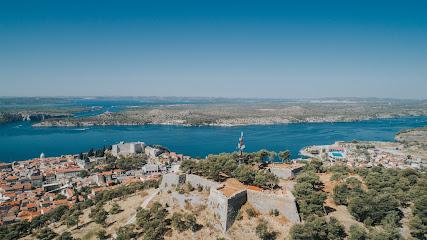
Croatica
Explore the enchanting city of Zadar with Croatica, your ultimate tour agency for unforgettable Adriatic adventures and cultural experiences.
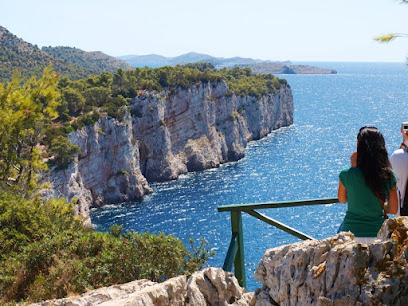
Kornati Bucht Excursion
Discover the stunning Kornati Bucht, a national park filled with breathtaking islands, crystal-clear waters, and exceptional marine life awaiting your exploration.
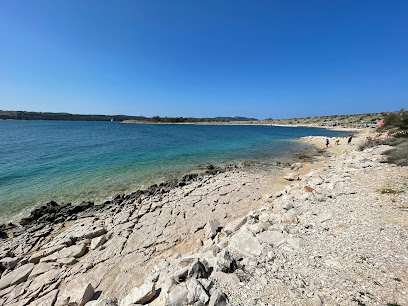
Statue of Špiro Brusina
Explore the Statue of Špiro Brusina in Zadar: A Stunning Sculpture Celebrating Croatian Artistry and History.
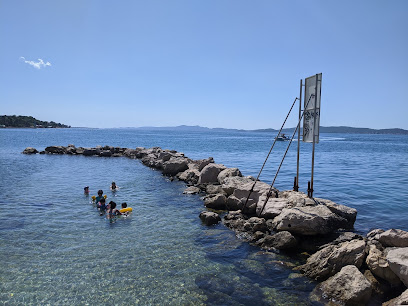
Jet ski Center
Experience the thrill of jet skiing and kayaking at Bibinje's premier water adventure hub along the stunning Adriatic coastline.
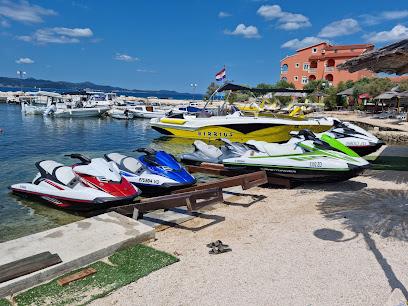
Golubinka Sea Cave
Explore the stunning Golubinka Sea Cave in Croatia, a hidden gem of nature featuring crystal-clear waters and breathtaking geological formations.
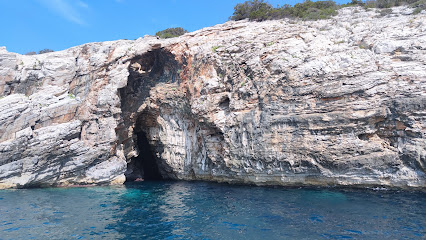
Tematska staza Tisno - Jezera
Discover the breathtaking Tematska staza Tisno - Jezera, a scenic hiking trail in Tisno, Croatia, offering stunning views and rich local culture.
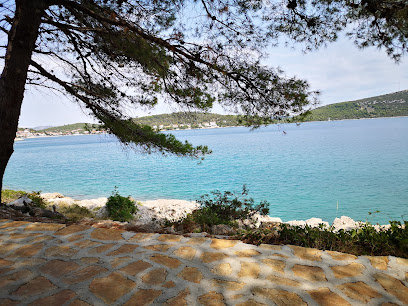
Boat Tour Adriatic Zadar
Explore the crystal-clear waters of the Adriatic Sea with Boat Tour Adriatic Zadar, an unforgettable adventure awaits you!
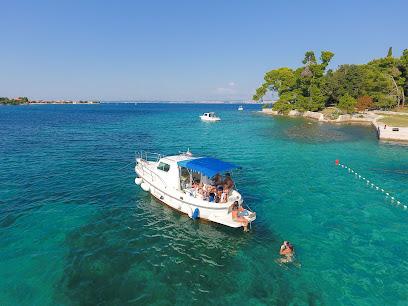
Mikado - Kornati Excursions
Experience the breathtaking beauty of the Kornati Islands with Mikado Excursions, your gateway to adventure in the Adriatic Sea.

Lookout
Discover breathtaking views and serene landscapes at the Lookout in Šibenik, a must-visit destination for nature lovers and photographers.
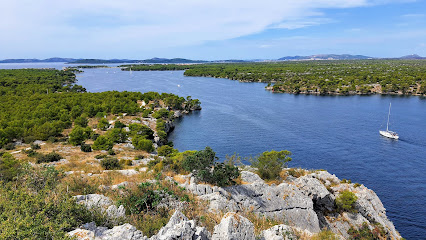
Candy Boat
Discover the perfect blend of adventure and sweetness at Candy Boat in Bibinje, where cycling and candy come together for unforgettable experiences.
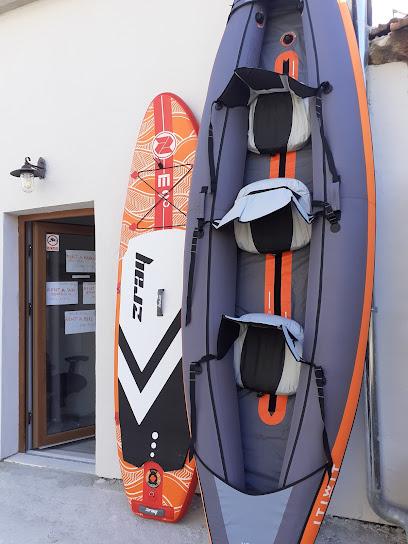
Best viewpoint
Discover stunning panoramic views of the Dalmatian coast at the Best Viewpoint in Sali, a must-visit tourist attraction for breathtaking vistas.
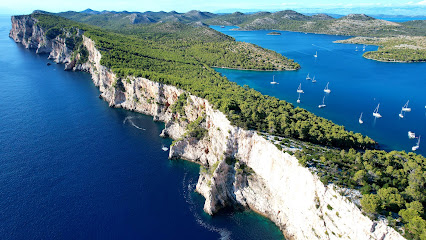
Zadar City Tour | Walking Tours Croatia | Tourist Agency
Explore Zadar's rich history, stunning views, and vibrant culture with an unforgettable walking tour experience along the beautiful Adriatic coast.
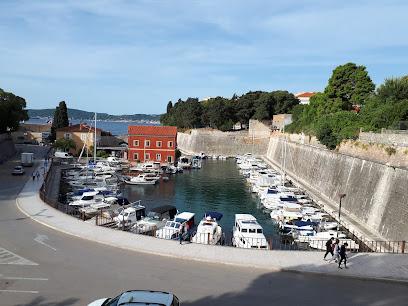
Sv. Ante Capljena
Experience the serene beauty of Sv. Ante Capljena, a hidden gem near Šibenik offering stunning views and a peaceful atmosphere in Croatia.

Essential places to dine
RESTORAN FEŠTA
Discover culinary excellence at Restoran Fešta on Žut Island - where exquisite cuisine meets stunning Adriatic views.
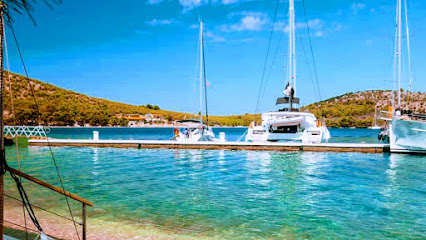
Konoba Suha Punta
Experience fresh seafood and grilled delights in a picturesque setting at Konoba Suha Punta on Kornati Islands.
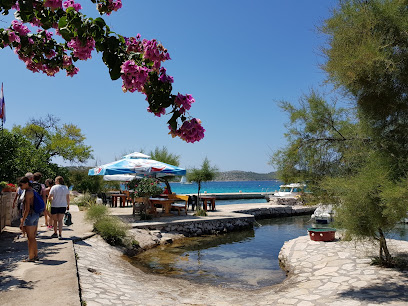
Konoba Opat
Discover authentic Croatian flavors amidst breathtaking views at Konoba Opat in Kornati Islands.
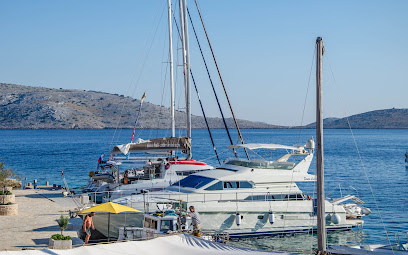
Konoba LARUS, Kornati
Savor authentic Croatian seafood in a picturesque setting at Konoba LARUS within Kornati National Park.
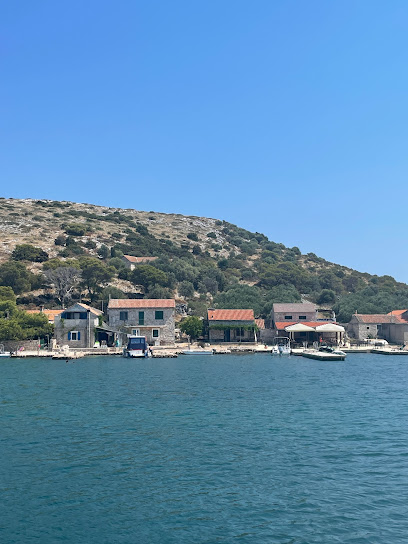
Konoba Levrnaka
Savor exquisite seafood and authentic Mediterranean flavors at Konoba Levrnaka in Kornati National Park's stunning natural setting.
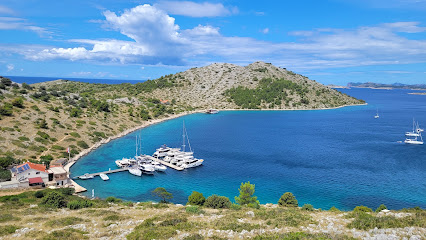
Uvala Koromačna
Experience exquisite local cuisine at Uvala Koromačna amidst the breathtaking landscapes of Kornati National Park.
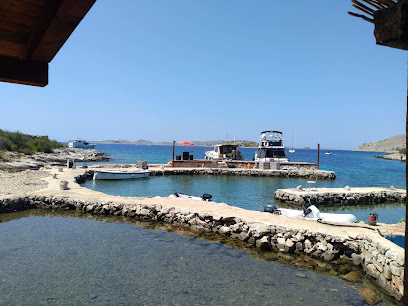
Konoba Sandra
Experience exquisite local cuisine surrounded by breathtaking views at Konoba Sandra on Otok Žut.
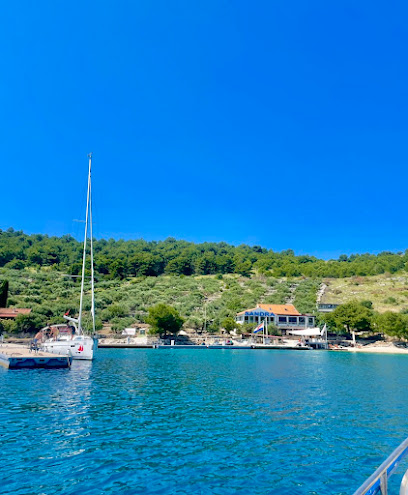
Konoba Piccolo
Discover authentic Croatian cuisine amidst breathtaking scenery at Konoba Piccolo on Otok Vela Smokvica.
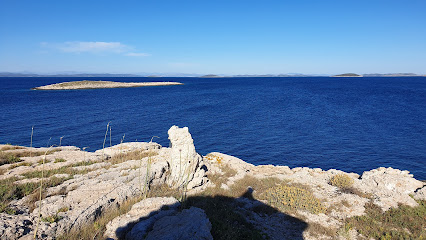
Šporka Mare Restaurant
Experience authentic Croatian seafood at Šporka Mare Restaurant in Sali – a must-visit culinary haven with stunning coastal views.
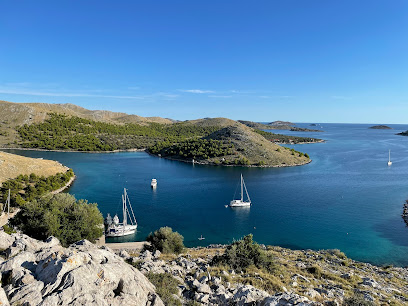
Restoran Trabakul Kornati
Experience authentic Croatian cuisine at Restoran Trabakul Kornati in Vrsi with stunning views of the Adriatic Sea.
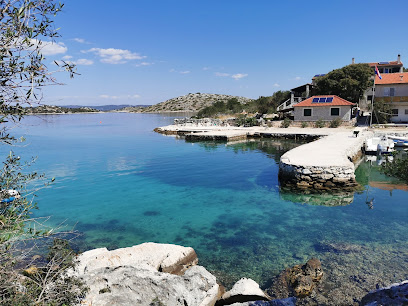
Konoba smokvica
Discover authentic Croatian flavors at Konoba Smokvica amidst breathtaking views in Kornati.
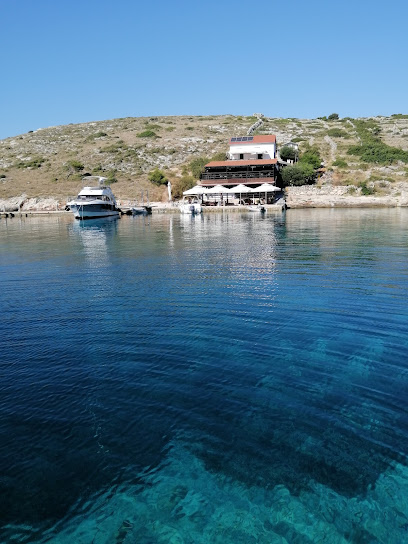
Restaurant Marina Kornati
Experience authentic Mediterranean cuisine at Restaurant Marina Kornati with breathtaking marina views in Biograd na Moru.

Konoba Soleta
Experience authentic Mediterranean cuisine amidst breathtaking views at Konoba Soleta in the enchanting Kornati Islands.
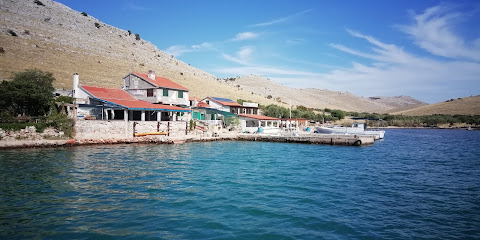
Konoba Ante Vrulje, Kornati
Experience authentic Croatian cuisine at Konoba Ante Vrulje in Kornati National Park—where fresh seafood meets breathtaking views.
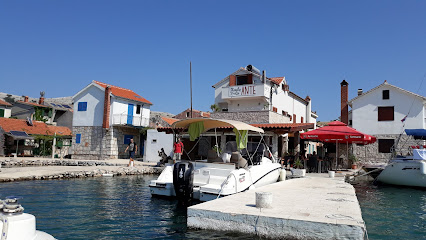
Konoba Robinson, Vrulje, Kornati
Experience authentic Croatian flavors at Konoba Robinson in the stunning Kornati Islands – a must-visit culinary destination for every traveler.
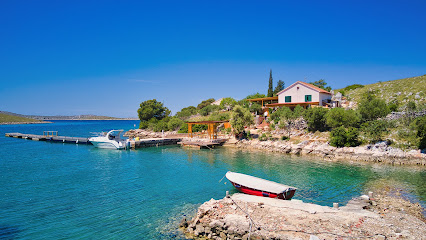
Markets, malls and hidden boutiques
Telašćica Nature Park
Discover the breathtaking landscapes and rich biodiversity of Telašćica Nature Park, a serene escape on Croatia's stunning Dalmatian coast.
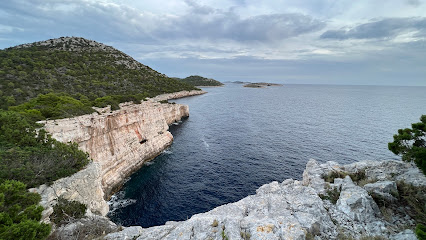
DALMARE Ltd.
Immerse yourself in shopping, dining, and entertainment at DALMARE Ltd., the premier shopping mall in Šibenik, Croatia.
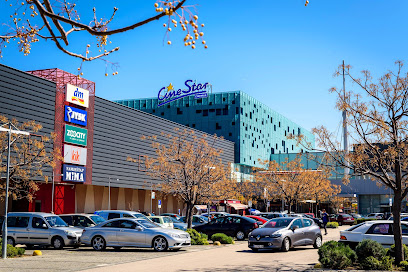
National Park Kornati
Explore the breathtaking beauty of National Park Kornati, a serene archipelago of islands offering adventure, tranquility, and vibrant marine life.
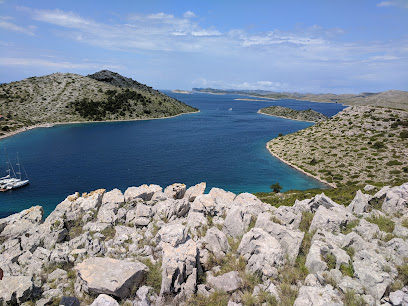
BURE CENTER
Explore Bure Center, Biograd na Moru's premier shopping mall with diverse shops, delightful dining, and family-friendly entertainment options.
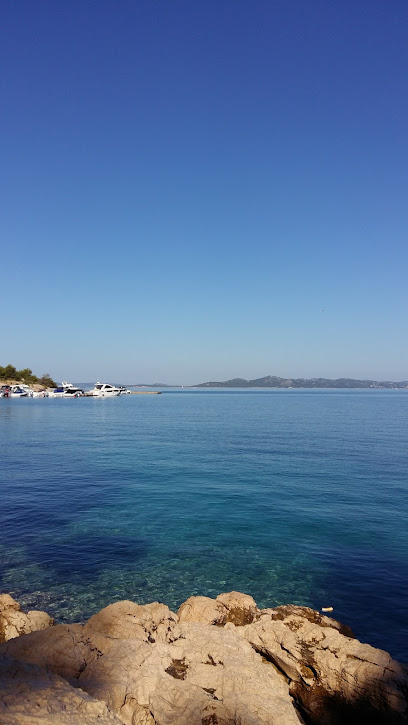
Karibu Kaaawa
Experience the rich aromas and flavors of expertly roasted coffee at Karibu Kaaawa in Betina, Croatia—a must-visit for all coffee lovers.
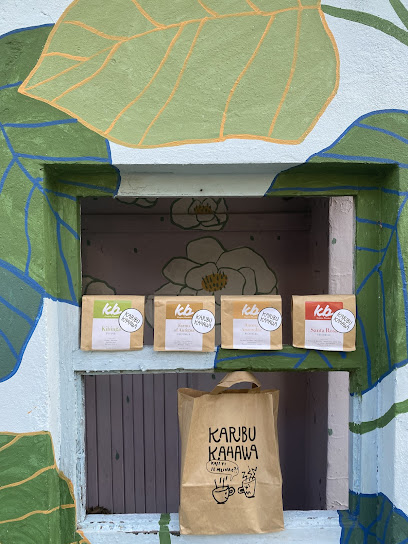
Hey Park Zadar
Explore Hey Park Zadar, a vibrant shopping mall in Croatia offering a mix of local and international brands, dining, and entertainment.
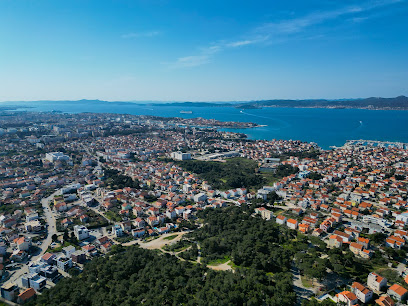
Obonjan Island Resort Croatia
Discover the serene beauty of Obonjan Island Resort, a luxurious escape in Croatia's stunning Adriatic Sea, perfect for relaxation and adventure.

ACI Marina Piskera
Experience the tranquil beauty of ACI Marina Piskera in Kornati National Park, a must-visit haven for sailing and nature lovers.
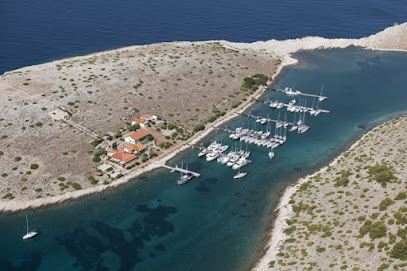
Konoba Soleta
Experience the authentic flavors of Croatia at Konoba Soleta, a gem in the breathtaking Kornati archipelago.
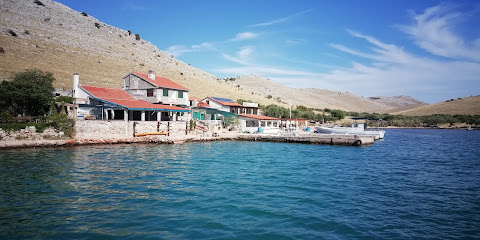
Konoba Robinson, Vrulje, Kornati
Experience the best of Croatian cuisine at Konoba Robinson in Kornati National Park, where fresh seafood meets breathtaking views.
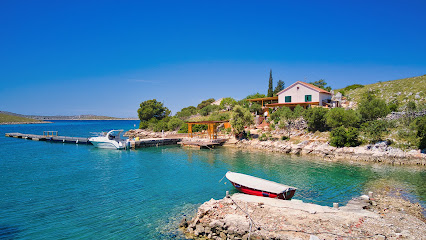
Plaža Colentum
Experience the tranquil beauty of Plaža Colentum, a scenic resort hotel on Murter Island, offering stunning beaches and endless relaxation.
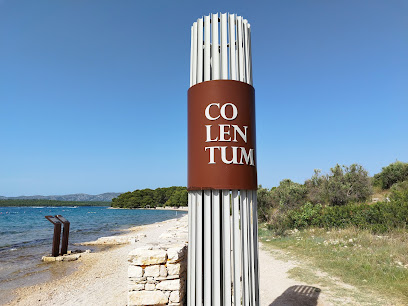
Konzum
Discover the essence of Grohote at Konzum, your convenient stop for fresh produce, local delicacies, and everyday essentials.
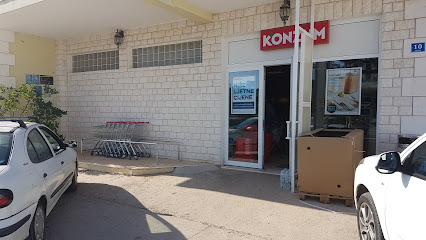
Wine,olive oil,liquer Krka Trgovački obrt Mihal
Discover the essence of Croatian flavors at Krka Trgovački obrt Mihal, where exquisite wines, olive oils, and liqueurs await your palate.

Church of Our Lady of Tarca
Discover the exquisite beauty and spiritual tranquility of the Church of Our Lady of Tarca in Kornati, a must-visit Catholic church and tourist attraction.
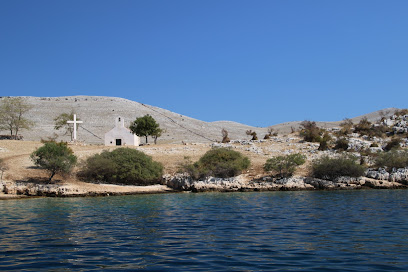
Mashtel Distillery
Experience the rich tradition of Croatian spirits at Mashtel Distillery in Zaton - a journey through flavors and distillation culture.
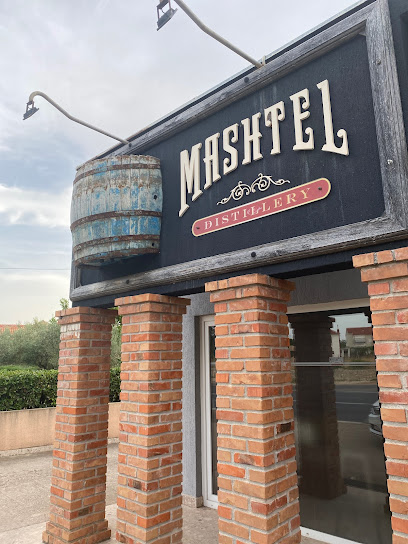
Essential bars & hidden hideouts
Konoba Suha Punta
Experience the best of Croatian cuisine at Konoba Suha Punta, where fresh seafood meets breathtaking views in the heart of Kornati National Park.

Konoba Opat
Experience the flavors of Croatia at Konoba Opat, a charming restaurant nestled in the breathtaking Kornati National Park, where every meal is a celebration of local cuisine.
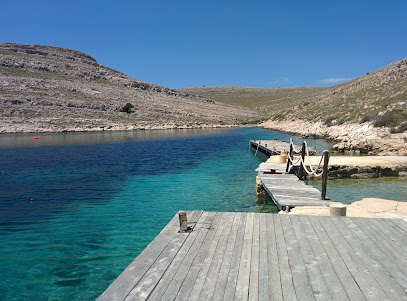
Konoba LARUS, Kornati
Experience the finest seafood and Mediterranean flavors at Konoba LARUS, nestled in the stunning Kornati National Park.
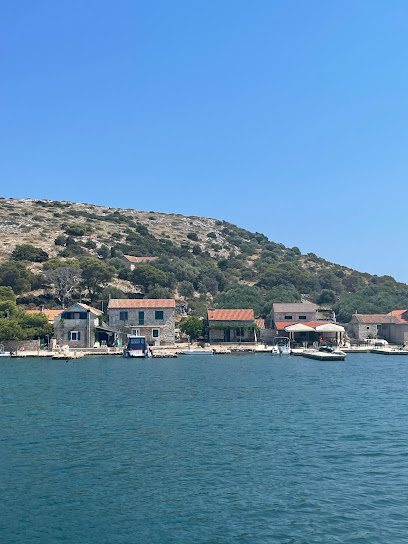
Konoba Levrnaka
Discover the culinary delights of Konoba Levrnaka, a charming restaurant in Kornati National Park serving fresh seafood in a breathtaking island setting.
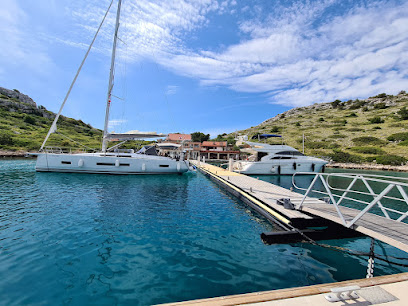
Uvala Koromačna
Experience the flavors of Dalmatia at Uvala Koromačna, a culinary haven in the heart of Kornati National Park, surrounded by stunning natural beauty.
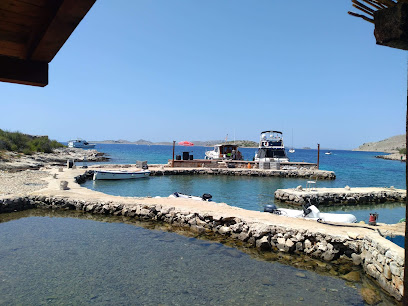
Konoba Piccolo
Experience authentic Croatian cuisine at Konoba Piccolo, where local flavors meet stunning seaside views in the heart of the Kornati Islands.
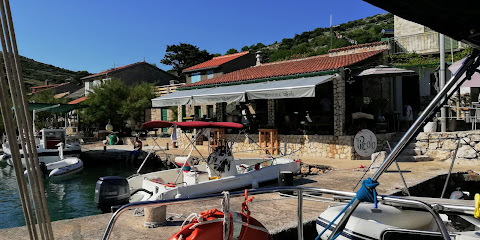
Šporka Mare Restaurant
Discover the flavors of Croatia at Šporka Mare Restaurant in Sali, where fresh seafood and local ingredients create a memorable dining experience.
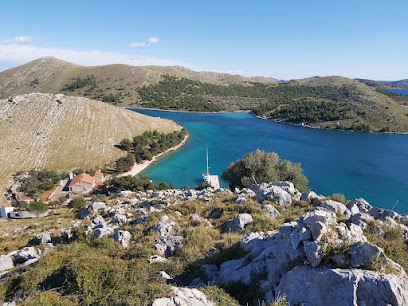
Konoba smokvica
Experience authentic Croatian cuisine with stunning views at Konoba Smokvica in the breathtaking Kornati archipelago.
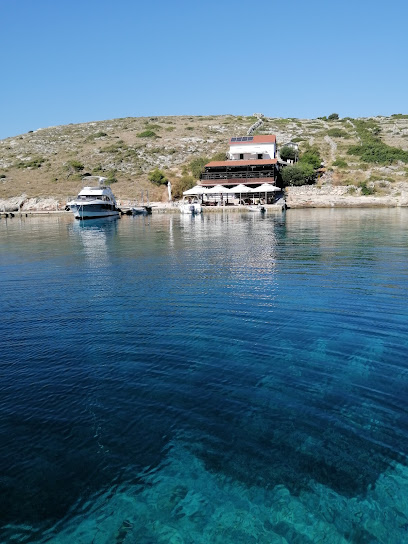
Restoran Trabakul Kornati
Experience the authentic taste of Dalmatian cuisine at Restoran Trabakul Kornati, where fresh ingredients meet breathtaking views in Vrsi, Croatia.
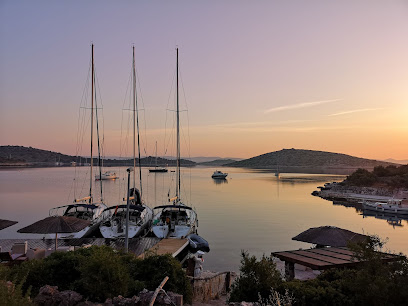
Konoba Soleta
Discover the flavors of the Adriatic at Konoba Soleta, a top-tier restaurant nestled in the stunning Kornati Islands.
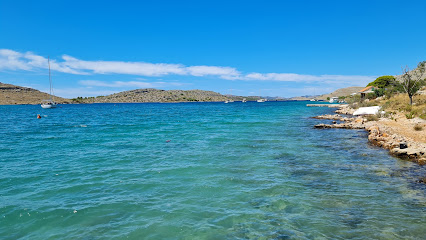
Konoba Ante Vrulje, Kornati
Experience authentic Dalmatian cuisine at Konoba Ante Vrulje, nestled in the breathtaking Kornati archipelago with stunning sea views.
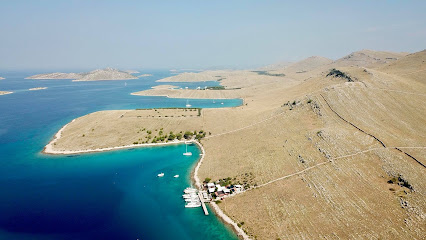
Core Holiday Home
Discover the serene beauty of Core Holiday Home in Kornati National Park, perfect for nature lovers and adventure seekers.
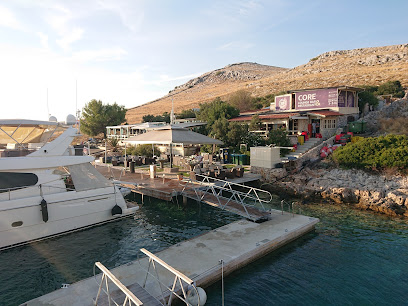
Konoba Robinson, Vrulje, Kornati
Experience the flavors of the Adriatic at Konoba Robinson, a culinary treasure in Kornati Islands, serving fresh seafood and local specialties.
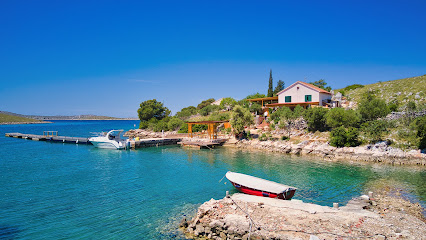
konoba Žmara
Experience authentic Dalmatian cuisine with breathtaking views at Konoba Žmara in the stunning Kornati National Park.
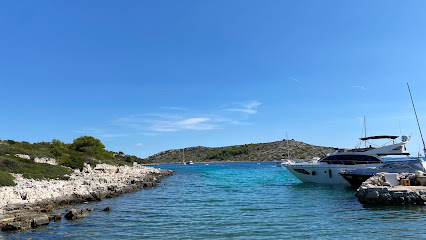
N20
Discover the rich flavors of Croatian cuisine at N20 Restaurant, a waterfront dining experience in Jezera with stunning views and fresh local ingredients.
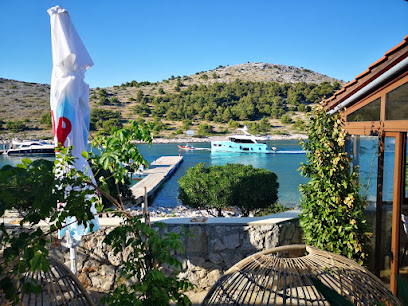
Local Phrases about Kornati Islands National Park
-
- HelloBok
[Bohk] - GoodbyeDoviđenja
[Doh-vee-jen-ya] - YesDa
[Dah] - NoNe
[Neh] - Please/You're welcomeMolim
[Moh-leem] - Thank youHvala
[Hvah-lah] - Excuse me/SorryOprostite
[Oh-pros-tee-teh] - How are you?Kako si?
[Kah-koh see?] - Fine. And you?Dobro. A ti?
[Doh-bro. Ah tee?] - Do you speak English?Govorite li engleski?
[Goh-voh-ree-teh lee eng-lehs-kee?] - I don't understandNe razumijem
[Neh rah-zoo-mee-yem]
- HelloBok
-
- I'd like to see the menu, pleaseMogu li vidjeti jelovnik, molim?
[Moh-goo lee vee-dyeh-tee yeh-lohv-neek, moh-leem?] - I don't eat meatNe jedem meso
[Neh yeh-dehm meh-so] - Cheers!Živjeli!
[Zhee-vyeh-lee!] - I would like to pay, pleaseŽelim platiti, molim
[Zheh-leem plah-tee-tee, moh-leem]
- I'd like to see the menu, pleaseMogu li vidjeti jelovnik, molim?
-
- Help!Pomoć!
[Poh-mohch!] - Go away!Idi dalje!
[Ee-dee dah-l-yeh!] - Call the Police!Zovite policiju!
[Zoh-vee-teh poh-lee-tsee-yoo!] - Call a doctor!Zovite doktora!
[Zoh-vee-teh dohk-toh-rah!] - I'm lostIzgubljen sam
[Eez-goob-lyen sahm] - I'm illBolestan sam
[Boh-leh-stahn sahm]
- Help!Pomoć!
-
- I'd like to buy...Želim kupiti...
[Zheh-leem koo-pee-tee...] - I'm just lookingSamo gledam
[Sah-moh gleh-dahm] - How much is it?Koliko košta?
[Koh-lee-koh koh-shta?] - That's too expensiveTo je preskupo
[Toh yeh prehs-koo-poh] - Can you lower the price?Možete li spustiti cijenu?
[Moh-zheh-teh lee spoos-tee-tee tsee-yeh-noo?]
- I'd like to buy...Želim kupiti...
-
- What time is it?Koliko je sati?
[Koh-lee-koh yeh sah-tee?] - It's one o'clockJedan je sat
[Yeh-dahn yeh saht] - Half past (10)Pola (deset)
[Poh-lah (deh-seht)] - MorningJutro
[Yoo-troh] - AfternoonPopodne
[Poh-pohd-neh] - EveningVečer
[Veh-chehr] - YesterdayJučer
[Yoo-chehr] - TodayDanas
[Dah-nahs] - TomorrowSutra
[Soo-trah] - 1Jedan
[Yeh-dahn] - 2Dva
[Dvah] - 3Tri
[Tree] - 4Četiri
[Cheh-tee-ree] - 5Pet
[Peh-t] - 6Šest
[Shehst] - 7Sedam
[Seh-dahm] - 8Osam
[Oh-sahm] - 9Devet
[Deh-veht] - 10Deset
[Deh-seht]
- What time is it?Koliko je sati?
-
- Where's a/the...?Gdje je...
[Gdyeh yeh...] - What's the address?Koja je adresa?
[Koh-yah yeh ah-deh-sah?] - Can you show me (on the map)?Možete li mi pokazati (na karti)?
[Moh-zheh-teh lee mee poh-kah-zah-tee (nah kahr-tee)?] - When's the next (bus)?Kada je sljedeći (autobus)?
[Kah-dah yeh sleh-deh-chee (ow-toh-boos)?] - A ticket (to ....)Jednu kartu (do ...)
[Yeh-dnoo kahr-too (doh ...)]
- Where's a/the...?Gdje je...
History of Kornati Islands National Park
-
The Kornati Islands have been inhabited since prehistoric times, as evidenced by the numerous archaeological finds scattered across the archipelago. Remnants of ancient Illyrian settlements can still be found, providing a glimpse into the lives of the early inhabitants who utilized the islands for their strategic position and rich marine resources.
-
During the Roman period, the Kornati Islands became an important part of the Roman Empire's maritime network. The islands were used for agriculture, particularly the cultivation of olives and grapes, and served as a strategic point for maritime trade and military operations. Ruins of Roman villas and agricultural terraces are still visible today, highlighting the islands' significance during this era.
-
In the Middle Ages, the Kornati Islands were part of the Byzantine Empire before falling under the rule of the Republic of Venice. The Venetians fortified the islands and established a system of land tenure that affected the local population. This period also saw the construction of numerous churches and chapels, some of which remain as historical landmarks.
-
The strategic location of the Kornati Islands made them a target for Ottoman incursions and pirate attacks during the 16th and 17th centuries. The local population built defensive structures and watchtowers to protect themselves from these threats. The remains of these fortifications can still be seen on some of the islands, bearing witness to this turbulent period in their history.
-
Throughout history, the Kornati Islands have been closely linked to agriculture and maritime activities. The local inhabitants engaged in olive growing, fishing, and sheep farming, adapting to the harsh conditions of the archipelago. The dry-stone walls, shepherds' huts, and olive groves found on the islands are a testament to their enduring agricultural and maritime heritage.
-
In 1980, the Kornati Islands were designated as a national park to preserve their unique natural and cultural heritage. This decision recognized the importance of the islands' diverse ecosystems, rich history, and traditional way of life. The national park status has helped protect the islands from overdevelopment and ensured the conservation of their pristine landscapes and historical sites.
Kornati Islands National Park Essentials
-
Kornati Islands National Park is located off the coast of Croatia, in the Adriatic Sea. The nearest major cities are Zadar and Šibenik. From these cities, you can take a boat tour directly to the islands. Both cities are accessible by road, rail, and air, with Zadar having its own international airport (Zadar Airport). Once in Zadar or Šibenik, you can book a boat transfer or join a guided tour to reach the Kornati Islands.
-
The primary mode of transportation within Kornati Islands National Park is by boat. There are numerous boat tours and private charters available from nearby coastal cities. Once on the islands, walking is the main way to explore since the terrain is rugged and vehicles are not permitted. If you're an experienced sailor, you can also rent a sailboat or yacht to explore the islands at your own pace.
-
The currency in Croatia is the Croatian Kuna (HRK). Credit cards are widely accepted in larger cities and for booking tours, but it is advisable to carry cash, especially when visiting the islands. ATMs are available in Zadar and Šibenik, but you should withdraw enough cash before heading to the islands, as there are no ATMs in Kornati Islands National Park.
-
Kornati Islands National Park is generally very safe for tourists. However, it's essential to take standard precautions. Always keep an eye on your belongings and avoid leaving valuables unattended. There are no specific areas with high crime rates targeting tourists, but it's always wise to stay vigilant. When exploring the islands, be cautious of the rugged terrain to prevent injuries.
-
In case of an emergency, dial 112 for immediate assistance. This number connects you to emergency services throughout Croatia. While on the islands, first aid kits are available on most tour boats. For medical emergencies, the nearest hospitals are in Zadar and Šibenik. It is highly recommended to have travel insurance that covers medical emergencies and evacuation.
-
Fashion: Do wear comfortable and sturdy footwear for walking on rugged terrain. Don’t wear high heels or flip-flops when exploring the islands. Religion: Do be respectful when visiting any religious sites on the islands. Public Transport: Do be punctual for boat tours, as they operate on strict schedules. Don’t expect public transport options like buses or taxis within the park. Greetings: Do greet locals and fellow tourists with a friendly 'Dobar dan' (Good day). Eating & Drinking: Do try the local seafood and traditional Croatian dishes available at restaurants on some of the islands. Don’t litter; always dispose of your trash properly to keep the park clean.
-
To experience Kornati Islands National Park like a local, consider visiting during the shoulder seasons (May-June or September-October) when the weather is pleasant, and the islands are less crowded. Engage with local tour operators who can provide insider knowledge and unique experiences, such as hidden coves and lesser-known snorkeling spots. Don’t miss trying 'Peka,' a traditional Croatian dish cooked under a bell-like lid covered with embers, available at some local restaurants.
Trending Landmarks in Kornati Islands National Park
Nearby Cities to Kornati Islands National Park
-
Things To Do in Trogir
-
Things To Do in Split
-
Things To Do in Bihac
-
Things To Do in Hvar
-
Things To Do in Makarska
-
Things To Do in Jajce
-
Things To Do in Pula
-
Things To Do in Banja Luka
-
Things To Do in Opatija
-
Things To Do in Rovinj
-
Things To Do in Mostar
-
Things To Do in Zenica
-
Things To Do in Urbino
-
Things To Do in Rimini
-
Things To Do in Faetano

